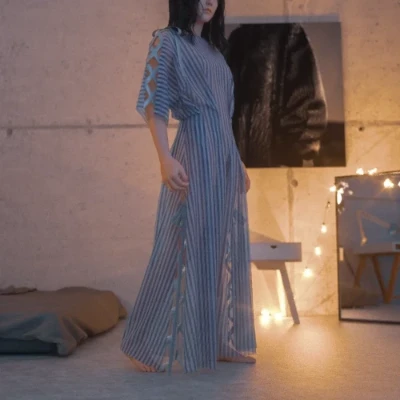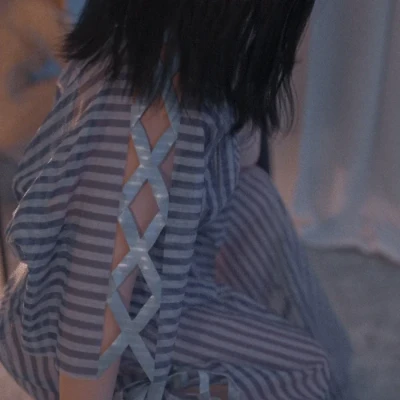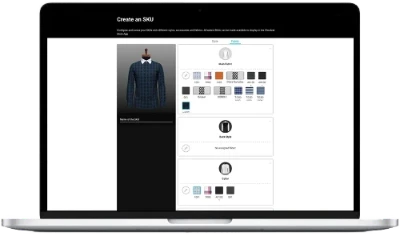Few people could ever have predicted the spread of a pandemic like COVID-19 and even fewer would have foreseen the impact of it on the fashion world. In just a few short months - or actually, what have seemed like the longest months since time began for some - fashion has come to a standstill in many countries across the world. London and Paris Fashion weeks were unable to take place, magazine fashion shoots were replaced by self portraits in model’s homes, and since shops were closed, clothing stock sat unsold in warehouses.
Fashion is a resilient form of culture and it will never be stopped entirely - but when we return to a post Covid world, it might take a different form. The ongoing need for social distancing and working from home is ideally suited to digital fashion. In fact, the whole process, from initial ideas, to sampling, through to a spectacular fashion show, and customers trying on your end product, can be done digitally. This also saves time, waste, and is more environmentally friendly.
Digital fashion is also quickly and easily accessible to people all over the world through the internet, and can be combined with other technologies like Augmented Reality (AR), Virtual Reality (VR), and Artificial Intelligence (AI) to provide a fun and interactive experience.

The Big Brands Taking up the Challenge
Brands like Tommy Hilfiger, Burberry, and Shopify have been experimenting with the form with great success. Tommy Hilfiger already primarily uses 3D design, and has announced that by 2021 the whole design process will be 3D. At the 2019 Lisbon Web Summit Daniel Grieder, chief executive of Tommy Hilfiger Global and PVH Europe explained: “If we have at once this digital design, we can use it for the digital showroom, use it for marketing — we don't have to photograph it — because it is all there. Everything will be possible, and so much faster.”
In February Burberry launched a new AR shopping tool in conjunction with Google Search. The innovative idea means that when consumers search for a Burberry item on Google using their phone, they can see it at scale next to existing objects - for example a digital bag could be placed next to a fabric skirt from the user’s wardrobe to see if they will look good together.
Meanwhile Shopify has added the capacity for sellers to integrate AR products directly into their platform. Many brands, including fashion leaders Rebecca Mintoff, have found the Augmented Reality option very useful.
However, it might seem that it’s much easier for big businesses, with their corresponding R&D budgets, to stick their necks out and take on a challenge like digital fashion. But digital fashion is also something that smaller brands can take part in too, with creative and effective results.
We have a linked series of products which are intuitive and cost efficient, giving independent, small and medium sized fashion businesses the chance to create something that is just as polished as any Bond Street store. Here are the three easy steps:
Step 1: Transform your physical designs to 3D digital designs by using 3D fashion design software
Starting from the development process, use 3D fashion design software such as Scanatic™ DC Suite to create your seasonal collection digital samples. The StyleBRIC feature allows you to make modular designs with which you can create permutations of thousands of different looks from one design.
This is totally unlike traditional methods, where every initial sample takes a week and making adjustments will take another week. That process is not only time consuming but also expensive. With digital samples, the sampling process will no longer be costly and lengthy. You can make adjustments, try different fabrics, trims or other details and instantly remove them if you don’t like the effect. The whole procedure could be complete in just a few days.

Step 2: Use a virtual model to do the fitting and create marketing asset
Once you have your seasonal collection ready in digital form, you can use virtual models to do the fitting and create 3D marketing assets with the help of the Stylebook Service. Since everything is digital, you will have full control on the models, backgrounds, poses and other variables. With experience in the system, you can even set up a virtual fashion show. Our 3D fashion design software, Scanatic™ DC Suite, now supports Alvanon’s ABP (Alvanon Body Platform). It allows designers to easily subscribe to virtual avatars with body shapes and sizes that match the designer’s target audience.
Step 3: Launch your designs before production, and migrate into on-demand manufacture
Decide on an e-commerce or social media platform to launch your designs before you manufacture a single garment. Let the customers interact, make comments, share and then pre-order everything. In this way, you will have much better control of the required sizes and quantity.
The biggest advantage of on-demand manufacturing is that you can respond quickly to trends and reduce the problem of over-stocking and over-manufacturing. 3D designs created with the Stylebook Service could let customers visualise designs in a nearly real perspective. The on-demand service not only helps to save costs, it is also more sustainable and environmentally friendly.



